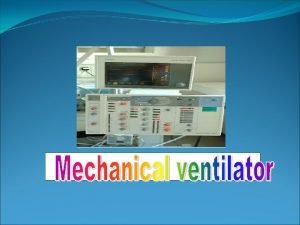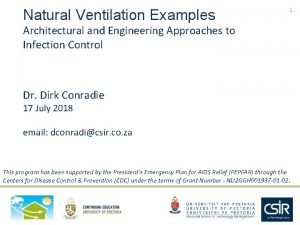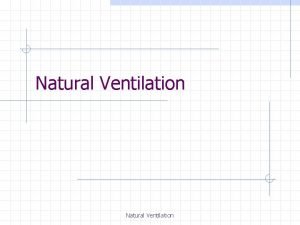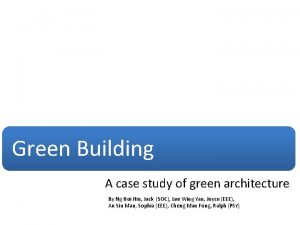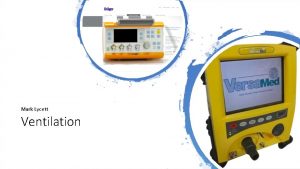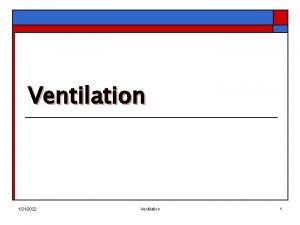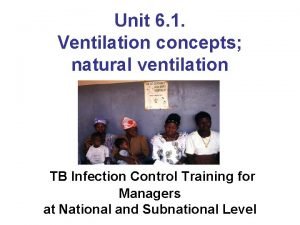Natural Ventilation Natural Ventilation can found in any







- Slides: 7

Natural Ventilation

Natural Ventilation can found in any old building that doesn’t have any HVAC systems. Natural ventilation is able to provide a space with an adequate amount of comfortable and healthy in door air quality. This type of ventilation is very cost effective due to using natural elements to cool a space. Natural Ventilation works with pressure and natural buoyancy of temperature and humidity to move fresh air though out a building. The location and position of the building is important to be in the direction of the wind pattern. This can be done with looking at the “rose wind” diagrams. The size of the building and the spaces linking to each other must have a continuous flow from one to another.

Types of Natural Ventilation SINGLE SIDED VENTILATION- Spaces that only have one window that will allow cool air in and carries the warm out. STACK VENTILATION- When cool air is let in through lower windows and travels through the space to an open area and continues up because of its natural buoyancy to higher windows or vents. Similar to a vacuum effect. SINGLE SIDED DOUBLE OPENING- Allows the cool air in the bottom portion and removes the warm air through the top portion. CROSS VENTILATION- The placement of windows in the space are located across from each other to form a vacuum effect. PASSIVE COOLING- Also know as night purging. When a building is cooled during the night allowing cool air to come in through the windows and then vented through the roof or atrium. Images taken from www. dyerenvironmental. com

Photo by Anton Grassi

ADVANTAGES AND DISAVANTAGES Advantages of Natural Ventilation Can have a annual savings of 10 -30% of total energy consumption Prevention of structural damage because of moisture through natural ventilation Low repair and maintenance Increase in value of property Positive image for companies Disadvantages of Natural Ventilation Uncontrollable and doesn’t have a uniform temperature Hard to meet codes for fire ratings Challenging for interior designer to keep spaces open and flowing correctly

Designer Tips o Consider the use of clerestories or vented skylights o o Provide attic ventilation Provide ridge Vents Naturally ventilated buildings should be narrow and no more than 45 ft wide Maximize wind-induced ventilation by placing the ridge of a building perpendicular to the summer winds Use low partition walls to allow maximum ventilation o Atriums are a good source of ventilation and light for internal spaces o o o

REFERENCES Whole Building Design Guide http: //www. wbdg. org/resources/naturalventilation. php U. S Department of Energy www. energysavers. gov National Oceanic And Atmospheric Administration www. noaa. gov
